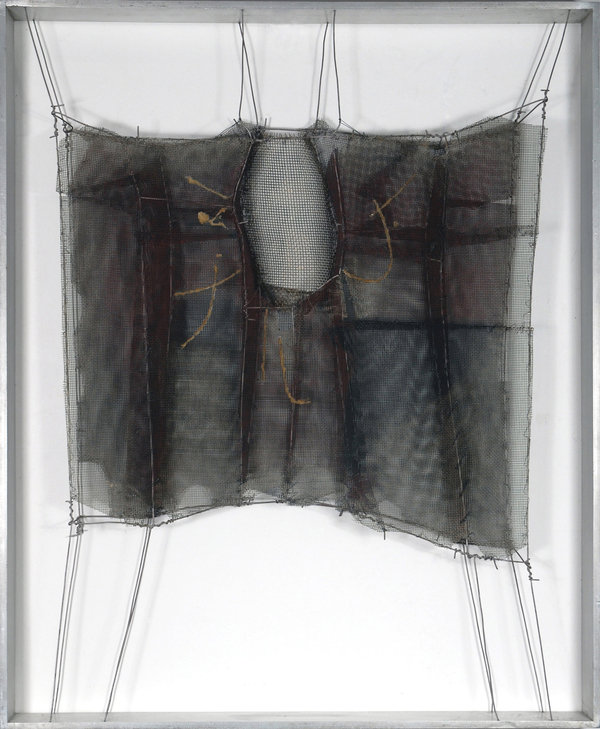Manuel Rivera
dal 23/11/2009 al 14/2/2010
Segnalato da
23/11/2009
Manuel Rivera
Arnes & Ropke Gallery, Madrid
In Search of Light and Space. In 1956, in his search for pure light and pure space, the artist struggled against the limitations of the canvas and shifted his practice to begin using the metal screens that would become his signature material.

Galerie Arnés y Röpke is pleased to present Manuel Rivera: In Search of Light and
Space on view from November 24, 2009 until February 15, 2010, with works from his
Metamorphosis series, oil on metal screen works that are considered one the most
seminal bodies of work in the history of Spanish Modern Art.
Manuel Rivera is one of the most important Spanish painters of the second half of
the 20th century. As one of a select group of artists including Manuel Millares,
Antonio Saura, Luis Feito, and Martín Chirino who came together in a period marked
by cultural depravation immediately after the Civil War, he co-founded the El Paso
Group and reconnected Spain to the international developments of Modern Art. With
Rivera’s special insight combined with his unique practice and materials, his
reinterpretation of Abstract Art is considered one of the most significant of his
time.
In 1956, in his search for pure light and pure space, Rivera struggled against the
limitations of the canvas and shifted his practice to begin using the metal screens
that would become his signature material. In single layers, the manipulation of the
material would play with light, and in multiple layers, they would interact with
each other visually and create movement and space. With this newly found method of
freeing his composition from the confines of the structure, Manuel Rivera was able
to also explore the spiritual and emotional expressions that would take his works
beyond the mere materials by which they were made.
"I am not simply looking for a balance of form and color; I need something more; to
begin with a lyrical idea or a pain; an emotion."
Manuel Rivera was born in Granada, Spain in 1927. He studied drawing and painting at
the Escuela de Artes y Oficios in Granada in 1941, and from 1944 at the Escuela de
Bellas Artes in Seville. He moved to Madrid in 1951, where he lived and worked until
he died in 1994. His work was exhibited widely throughout Spain and internationally
and was a recipient of many awards and distinctions throughout his career. He is
part of some of the most important museum collections in the world, including the
Museo Nacional Centro de Arte Reina Sofía in Madrid, the British Museum in London,
the Carnegie Institute in Pittsburgh, the Collection of Contemporary Art in the
Museo Patio Herreriano in Valladolid, the Folkswang Museum in Essen, the Kunsthalle
in Mannheim, the National Museum of Art in Paris, the MoMA and the Solomon
Guggenheim Museum in New York, and the Stedelijk Museum in Amsterdam.
Reception: 24 November 2009, 6:00 PM
Galeria Arnés y Röpke
Calle Juan de Mena, 12. 1' D., 28014 Madrid
Monday to Friday 10.00-14.00 / 16.00-19.00
Free admission



